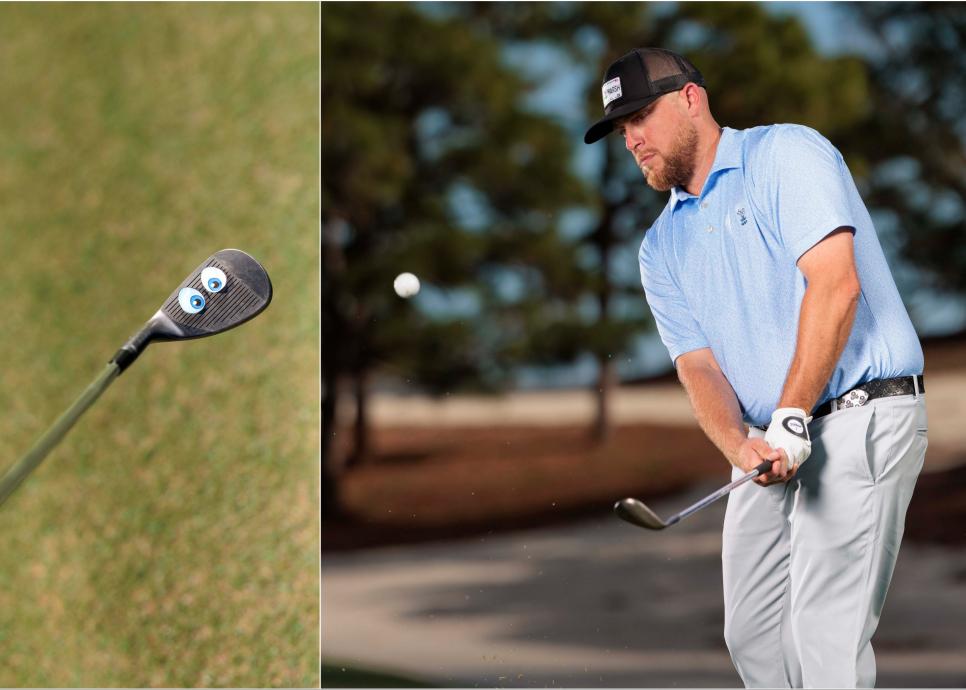[PHOTOS: Jenson Larson]
From a tight fairway lie, such as the one pictured above, the first thought that comes to many golfers’ minds is: please don’t chunk this! Why? Let’s face it, there aren’t many mis-hits more embarrassing than laying the sod over the ball, especially so close to the green.
The good news is you’re a lot closer to mastering this delicate pitch than you think. When you’re looking to generate stopping power, you need the clubhead coming from a high place on the backswing because that’s what produces speed and creates more friction between the clubhead and the ball. Most golfers get that part right – their backswings are plenty long enough. Where they struggle is on the follow-through. Instead of keeping their body moving through the shot, they completely stall and the club crashes and digs into the ground, leaving behind a beaver-pelt-sized divot.

There are other contributing factors to the dreaded chunked pitch, such as an excessively forward leaning shaft at impact, but the primary culprit is the lack of any body rotation on the forward side of the swing. Without it, the club is almost certain to dig, and the ball is likely to travel only a few feet. Here’s how to hit this shot effectively with the help of your thumbs and where they point on the takeaway and at the finish.
Start by dialling the clubface open several degrees, and play the ball slightly forward of centre in your stance. On the backswing, set the wrists early by making the thumbs point parallel to the ground before your hands pass your trail thigh [above]. This will get the clubhead working up and give you the height you need on the backswing. As you swing down and through, rotate your chest around to the left, so it faces the target. Finish with your knuckles angled slightly towards the ground and the handle very close to your left hip pocket [bottom right]. This low, rotated finish allows the club to glide across the turf, rather than dig. It also encourages the clubface to remain open and shifts your contact point to the toe side of centre on the face so that you can swing harder – which creates more spin – without producing as much ball speed.

On these tight-lie pitches, think of the clubface as having eyes [above]. As you pivot through, keep the clubface open, or pointing to the sky, so that these eyes are staring back at you at the completion of your swing. Hold that stare, and you’ll hit the ball high and soft every time.
Get your thumbs pointing downward at the finish, and your playing partners will be giving you the thumbs up around the greens.

